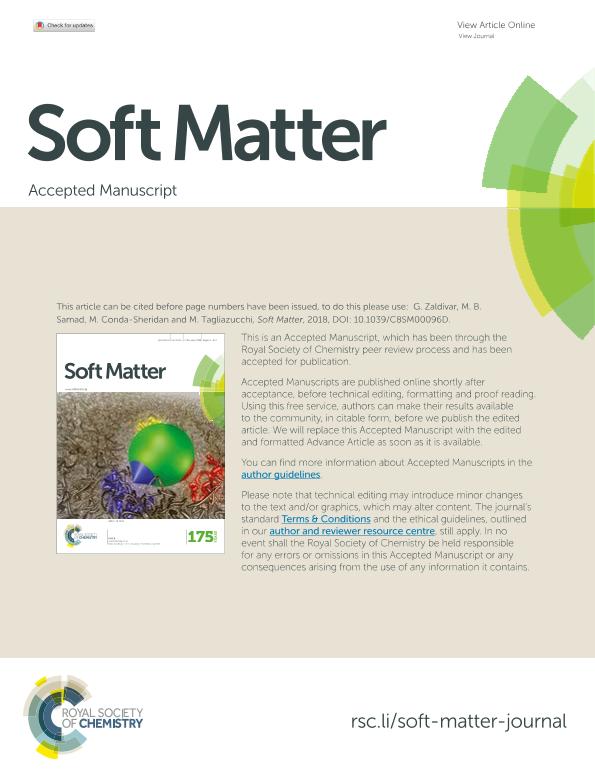Artículo
Self-assembly of model short triblock amphiphiles in dilute solution
Fecha de publicación:
09/2018
Editorial:
Royal Society of Chemistry
Revista:
Soft Matter
ISSN:
1744-683X
Idioma:
Inglés
Tipo de recurso:
Artículo publicado
Clasificación temática:
Resumen
In this work, a molecular theory is used to study the self-assembly of short diblock and triblock amphiphiles, with head-tail and head-linker-tail structures, respectively. The theory was used to systematically explore the effects of the molecular architecture and the affinity of the solvent for the linker and tail blocks on the relative stability of the different nanostructures formed by the amphiphiles in dilute solution, which include spherical micelles, cylindrical fibers and planar lamellas. Moreover, the theory predicts that each of these nanostructures can adopt two different types of internal organization: (i) normal nanostructures with a core composed of tail segments and a corona composed of head segments, and (ii) nanostructures with a core formed by linker segments and a corona formed by tail and head segments. The theory predicts the occurrence of a transition from micelle to fiber to lamella when increasing the length of the tail or the linker blocks, which is in qualitative agreement with the geometric packing theory and with experiments in the literature. The theory also predicts a transition from micelle to fiber to lamella as the affinity of the solvent for the tail or linker block is decreased. This result is also in qualitative agreement with experiments in the literature but cannot be explained in terms of the geometric packing theory. The molecular theory provides an explanation for this result in terms of the competition between solvophobic attractions among segments in the core and steric repulsions between segments in the corona for the different types of self-assembled nanostructures.
Palabras clave:
Amphiphile
,
Self-assembly
,
Micelle
,
Molecular Theory
Archivos asociados
Licencia
Identificadores
Colecciones
Articulos(INQUIMAE)
Articulos de INST.D/QUIM FIS D/L MATERIALES MEDIOAMB Y ENERGIA
Articulos de INST.D/QUIM FIS D/L MATERIALES MEDIOAMB Y ENERGIA
Citación
Zaldivar, Gervasio; Samad, M. B.; Conda Sheridan, Martin; Tagliazucchi, Mario Eugenio; Self-assembly of model short triblock amphiphiles in dilute solution; Royal Society of Chemistry; Soft Matter; 14; 16; 9-2018; 3171-3181
Compartir
Altmétricas




